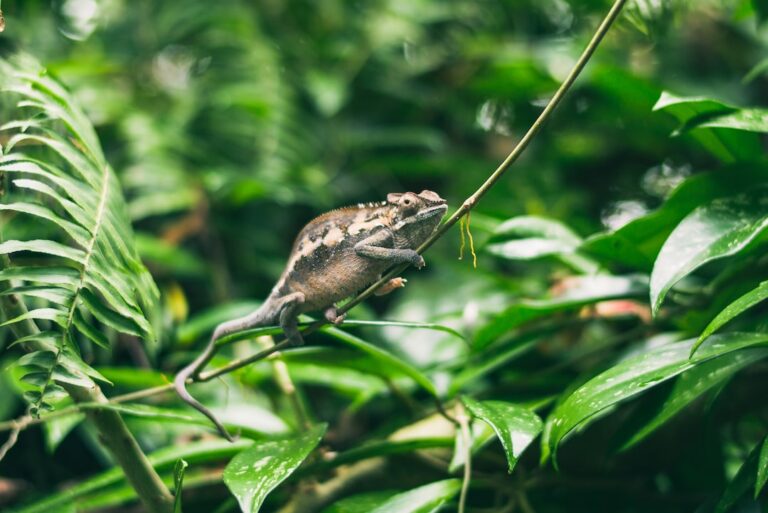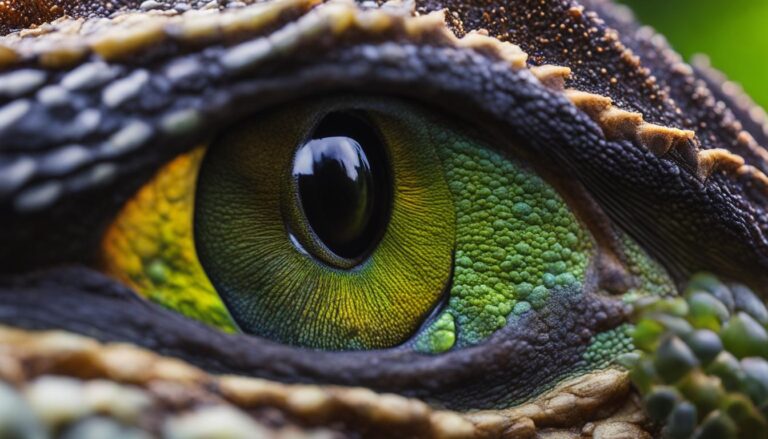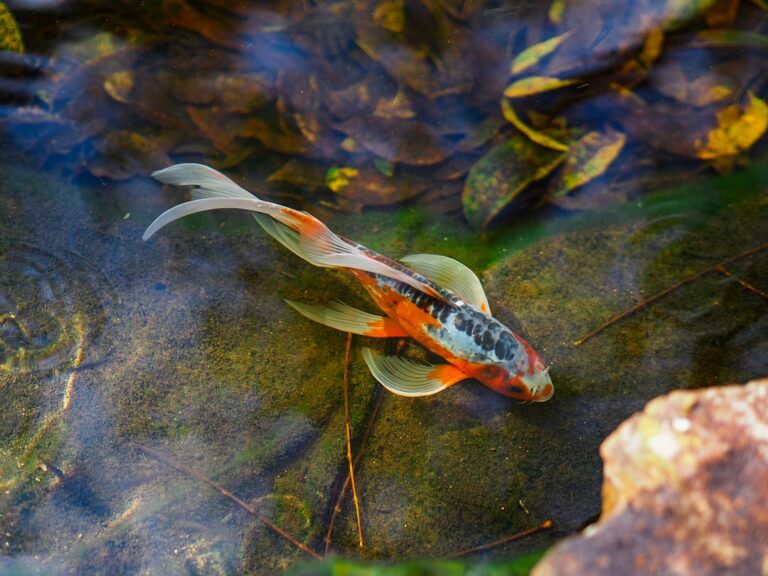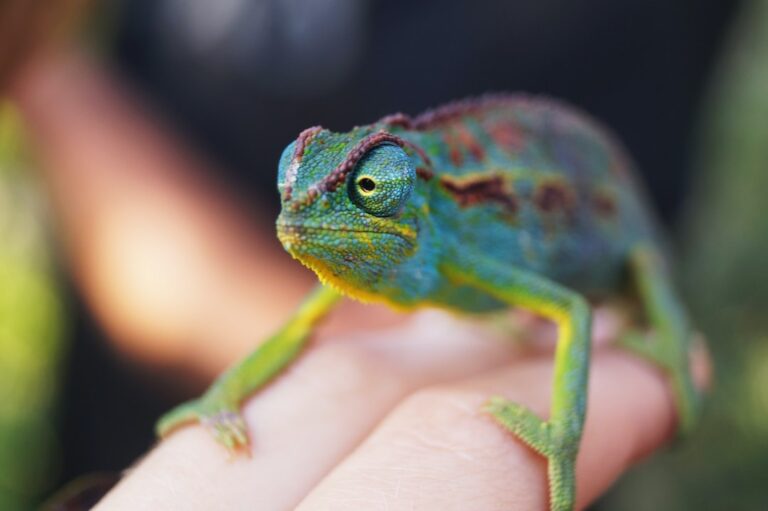Do Chameleons Play Dead?
Chameleons are fascinating creatures known for their unique ability to change color and blend into their surroundings. They belong to the family Chamaeleonidae and are native to Africa, Madagascar, and parts of southern Europe, Asia, and the Middle East. Chameleons have a distinctive appearance with their bulging eyes, long tongue, and prehensile tail. They are arboreal creatures, meaning they spend most of their time in trees.
Chameleons are known for their slow movements and deliberate mannerisms. They have the ability to move their eyes independently, allowing them to have a 360-degree view of their surroundings. This helps them spot potential prey or predators. Chameleons also have a long, sticky tongue that they use to catch insects. They are primarily insectivores but may also eat small reptiles and birds.
Table of Contents
The Concept of Playing Dead in Animals
Playing dead is a survival tactic used by many animals in the animal kingdom. It involves an animal feigning death in order to avoid being attacked or eaten by a predator. This behavior is often triggered by a perceived threat or danger. By playing dead, the animal hopes to trick the predator into thinking it is no longer a threat or not worth pursuing.
There are several examples of animals that play dead. One well-known example is the opossum. When threatened, opossums will go limp and appear lifeless, even emitting a foul odor to further convince predators that they are dead. Another example is the hognose snake, which will roll onto its back, open its mouth, and emit a foul odor when threatened.
Do Chameleons Have the Ability to Play Dead?
While chameleons are known for their ability to change color and blend into their surroundings, there is some debate about whether they have the ability to play dead. Unlike animals that play dead by going limp or emitting a foul odor, chameleons rely on their camouflage and slow movements to avoid predators.
Chameleons have the unique ability to change color to match their surroundings. This helps them blend in and avoid detection by predators. When threatened, chameleons may also puff up their bodies and display their bright colors as a warning to potential predators. This behavior is known as “bluffing” and is a form of defense rather than playing dead.
Instances of Chameleons Playing Dead in the Wild
While chameleons may not play dead in the traditional sense, there have been instances of chameleons exhibiting behavior that could be interpreted as playing dead. One such instance was observed in a study conducted in Madagascar. Researchers observed a chameleon that was being attacked by a snake. The chameleon went completely still and appeared lifeless, causing the snake to lose interest and move on.
Another instance of chameleons playing dead was documented in a video captured in South Africa. In the video, a chameleon is seen being attacked by a bird. The chameleon falls to the ground and remains motionless, appearing to be dead. The bird eventually loses interest and flies away, allowing the chameleon to escape.
The Purpose of Playing Dead for Chameleons
While playing dead may not be a common behavior for chameleons, there are several benefits to this survival tactic. By appearing lifeless, chameleons can trick predators into thinking they are no longer a threat or not worth pursuing. This gives them an opportunity to escape and find safety.
Playing dead also allows chameleons to conserve energy. By remaining still and not moving, they can conserve their energy reserves and avoid attracting attention from predators. This can be especially beneficial if they are unable to find food or water for an extended period of time.
How Chameleons Mimic Death to Escape Predators
When chameleons mimic death, they go completely still and remain motionless. They may also flatten their bodies and close their eyes to further enhance the illusion of being dead. By doing so, they hope to convince predators that they are no longer a threat or not worth pursuing.
In addition to mimicking death, chameleons may also change their color to match their surroundings. This helps them blend in and avoid detection by predators. By combining these tactics, chameleons increase their chances of survival and escape.
The Physical Changes that Occur in a Chameleon Playing Dead
When a chameleon plays dead, several physical changes occur. One of the most noticeable changes is the chameleon’s body becoming limp and motionless. They may also flatten their bodies and close their eyes to further enhance the illusion of being dead.
In addition to these changes, chameleons may also change their color to match their surroundings. This is a natural defense mechanism that helps them blend in and avoid detection by predators. By changing their color, chameleons can become virtually invisible to predators.
Can Chameleons Play Dead for Extended Periods of Time?
While chameleons can play dead for short periods of time, it is not known how long they can maintain this behavior. Playing dead requires a significant amount of energy and can be physically taxing for the chameleon. It is likely that they can only play dead for a limited amount of time before needing to recover.
Playing dead for extended periods of time also carries risks for chameleons. They are vulnerable to predation while playing dead, as they are unable to defend themselves or escape if a predator approaches. Therefore, it is in the chameleon’s best interest to recover from playing dead as quickly as possible.
How Chameleons Recover from Playing Dead
After playing dead, chameleons will slowly regain their normal behavior and movements. They may start by twitching their limbs or flicking their tongues. Once they feel it is safe to do so, they will gradually resume their normal activities, such as moving and hunting for food.
Recovery is an important process for chameleons, as it allows them to regain their strength and energy. It also allows them to resume their normal behaviors and avoid predation. Without proper recovery, chameleons may be at a higher risk of being attacked by predators.
The Fascinating World of Chameleons and Their Survival Tactics
Chameleons are truly fascinating creatures with unique characteristics and survival tactics. While they may not play dead in the traditional sense, they have the ability to mimic death and use their camouflage to avoid predators. By appearing lifeless and blending into their surroundings, chameleons increase their chances of survival and escape.
The world of chameleons is full of wonder and intrigue. From their ability to change color to their slow movements and deliberate mannerisms, they are truly a marvel of nature. By understanding their behavior and survival tactics, we can gain a deeper appreciation for these incredible creatures and the complex ecosystems they inhabit.
If you’re curious about the fascinating behavior of chameleons, you might also be interested in learning about their blinking habits. Do chameleons blink? Find out in this informative article from Reptile Friend: http://reptilefriend.com/do-chameleons-blink/. Discover the reasons behind their blinking and how it contributes to their unique survival strategies.







